Sugar gliders are very active, playful, intelligent, and inquisitive animals. They are adorable little creatures that make great pets.A cage with plenty of space and attractive accessories is the best way to keep sugar gliders healthy.
A sugar glider needs a cage for its safety and good health . There are a lot of things at home that can hurt sugar glider.Sugar gliders are active little marsupials that need a lot of room in their cage to be able to move and jump freely. They need some elements in their cage to grow up properly and healthy. It can be daunting to learn how to set up a sugar glider cage, but it’s extremely easy! just need to know what sugar gliders need in their cage, what habitat requirements they need.
In this guide, I’ll be going deep into the topic, and discuss everything you need to know in setting it up.
Table of Contents
Do sugar gliders need a cage?

Pet gliders can live without a cage, but safety is paramount. Not only do they give a space of safety and comfort, but the size and shape of your sugar glider cage also helps to ensure that he gets the right amount of exercise, stimulation and mental health. When it comes to cages for sugar gliders, size is one of the most important factors to consider.
A minimum cage size of 2 feet wide, 2 feet deep, and 3 feet tall is recommended for one or two sugar gliders.This will give them enough space to move around, play and exercise. which also prevents your gliders from getting bored. Your Sugar Glider’s cage should be comfortable and safe while also being large enough to allow them to move around freely.You can choose from metal, acrylic, or wooden cages. The sugar glider cage spacing will ensure your furry friend has a safe environment.
Since gliders are small animals it is easy for them to escape when they are unrestricted. This can put them in danger. Even the smallest things in your home can pose a risk to sugar gliders.
Essential Components for a Comfortable Sugar Glider Cage
Sugar gliders are active and social animals that require a large and stimulating environment to thrive.Choosing a sugar glider cage requires careful consideration of several important features and design aspects. The cage should be spacious, secure, and made of a non-toxic material.
It should also provide plenty of perches, branches, levels, and hiding places to ensure the glider’s physical and mental well-being. By providing an enriching and stimulating cage environment, you can help your sugar glider lead a happy and healthy life.
Sizing:
It is important for your sugar glider to choose the right cage. make sure the sugar glider’s cage is big enough for them to move around and stretch their arms and legs, but not so big that they feel lost in it. The cage should also be tall enough for them to climb, as sugar gliders love to climb. A good rule of thumb is to choose a cage that is 24 x 24 x 36 inches.This size is perfect for one or two sugar gliders. Make sure they have plenty of activities and places to nap in their cage If you want them to feel at home,safe and comfortable.
Types of cages:
When choosing a sugar glider cage,it is important to know that there are several types of cages to choose from, including metal,acrylic and wooden cages. All types come with their own advantages and disadvantages, so be sure to do your work before making a decision. Most commonly used material for sugar glider cages is wire mesh. This material is ideal because it provides proper ventilation, which is essential for the gliders’ respiratory health.

The wire mesh should have small enough openings to prevent the gliders from escaping, but not so small that they can get stuck. A 1/2 inch spacing between wires is usually recommended.
Shortly, you can take into consideration the following:
- Metal cages: strong, durable and easy to clean
- Acrylic cages: clear view, lightweight but more expensive
- Wooden cages: natural-looking but require more maintenance.
One popular type of cage for sugar gliders is the vertical cage. A cage with vertical space is crucial. Choose for a cage with multiple levels or a tall vertical design that allows the gliders to climb and explore. You can also include branches and perches within the cage to simulate their natural habitat and encourage exercise. These cages are tall and narrow, giving your sugar glider plenty of space to climb. They also come with a variety of accessories, such as hammocks and ladders, to keep your sugar glider entertained.
Bedding Materials:
Providing cozy sleeping spaces, such as fabric pouches or nest boxes, will help the glider feel safe and secure. Most sugar glider cages would be large finch or bird cages. Therefore, the base would be a wire bottom. To make sure that your pocket pets wouldn’t make a mess, install the bedding material on the bottom or base.This can be as simple as an absorbent substrate that would suck up liquid and catch solids that would be free-falling within the cage.Sugar glider sleep 13-19 hours per day.
- Fleece is a popular choice for sugar glider bedding because it is easy to clean.
- shredded newspaper or paper towels, is an affordable option that is good at absorbing moisture.
- Wood shavings, such as aspen or pine, are natural and absorbent.
Bar Spacing:
When choosing a cage for your sugar glider, consider the bar spacing. Bar spacing and thickness are also factors to consider when looking after cages for sugar gliders. The bars should be spaced not more than 1/2 inch apart, to prevent your pet from escaping or getting their head stuck. The bars should also be thick enough to prevent bending or breaking.It’s important to remember that sugar gliders are excellent climbers and can easily maneuver through small gaps.
The most common bedding used for sugar gliders is recycled paper bedding that comes in a small cube or rectangle. The fiber can be opened and fluffed to create a softer and more absorbent surface.
Where to place the baby sugarglider’s cage?
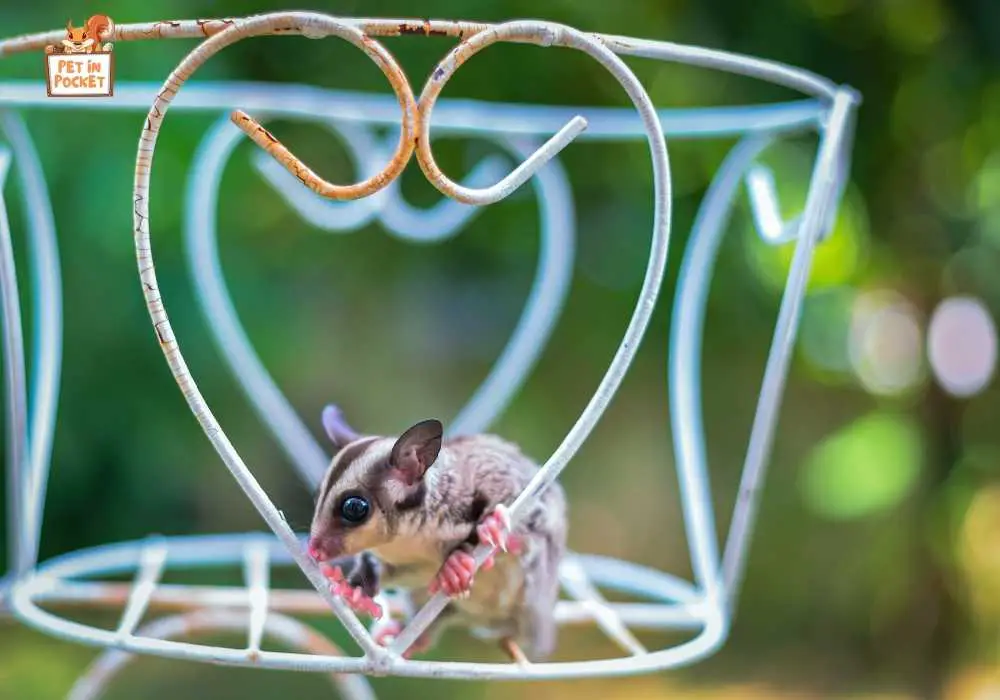
Placement of the sugar glider cage in your home is just very important.where you put their little abode can make a big difference in their overall well-being and happiness.
Location:
Setting up the perfect environment Your sugar glider’s cage should be kept in a quiet room in your house where there is not a lot of foot traffic. The sugar glider is very active at night, that is why you may want to keep their cage in your bedroom, so you can bond with them while they are awake.
Your sugar glider’s cage should also be placed away from any drafty windows or doors. The cage should be covered with a light-blocking cloth to create a feeling of nighttime. This will help your sugar glider feel more comfortable and relaxed.
Placement of Cage in Home:
The placement of the cage in your home is just as important as the cage itself! After all, where you put their little abode can make a big difference in their overall well-being and happiness.
First and foremost, you’ll want to pick a spot that’s safe for them. We’re talking away from windows and doors where drafts can sweep in and play havoc with their delicate little bodies. And speaking of temperature, it’s important to keep their cage away from direct sunlight as well.
Imagine being stuck in a hot, stuffy room all day – not too pleasant, right? So, keep their cage in a well-ventilated area with a comfortable temperature.
Ofcourse, you also want to think about your own convenience. Sugar gliders are nocturnal animals, so keep in mind that they may play all night and make a lot of noise! That’s why it’s a good idea to place their cage in an area where the sound won’t bother you.
What Should I Add to My Sugar Glider’s Cage?
All creatures need some necessary things to live .To maintain good health ,it is important to get all those things.Gliders love to hide so ensure that their cage is well decorated with hammocks and other hiding places. It is important that there are no obstructions in sugar glider cage.
| A water bottle | Sugar gliders need to drink water, so be sure to put a water bottle in their cage. |
| Food Dishes | Your sugar glider will need a place to eat, so be sure to include a couple of food dishes in their cage. These can be made of metal, ceramic or plastic. Be sure to choose dishes that can be easily cleaned, and that your glider cannot chew or tip over. |
| Toys | Sugar gliders love to play, so be sure to include some toys in their cage. |
Sugar gliders are adorable and energetic animals that require plenty of playtime and mental stimulation to stay healthy and happy. Choosing the right toys for your sugar glider is crucial for their overall wellbeing.
Types of Toys:
Toys are an essential part of providing this stimulation, and there are many types of toys available for sugar gliders. In this article, we’ll discuss the different types of toys for sugar gliders and the benefits they provide.
Climbing Toys
Ropes and ladders are an excellent way to encourage your sugar glider to exercise and explore. These toys mimic the natural environment of sugar gliders and allow them to practice their natural instincts, such as jumping and climbing.
Foraging Toys
Puzzle feeders provide a fun and challenging way for sugar gliders to find their food. These toys can help to stimulate your sugar glider’s mind and prevent boredom.
Chew Toys
Wood blocks or non-toxic chew sticks are important for sugar gliders to keep their teeth healthy and prevent overgrowth. These toys can also provide a fun and satisfying way for sugar gliders to relieve stress and anxiety.
Hanging Pouches or Hammocks toys:
Hanging pouches or hammocks provide a comfortable and secure place for sugar gliders to sleep and rest. These toys can also provide a fun and cozy place for sugar gliders to play and explore.
Exercise Wheels toys:
These are excellent for encouraging sugar gliders to exercise and stay active, which is crucial for their physical and mental wellbeing. When choosing a wheel, it is crucial to select one that is safe and appropriate for sugar gliders, as some types of wheels can cause injuries or be too small for them to use comfortably.
Foraging Toys, Such as Puzzle Feeders
These toys provide a fun and challenging way for sugar gliders to find their food. They can help stimulate their minds and prevent boredom. When choosing a puzzle feeder, it is crucial to select one that is safe and appropriate for sugar gliders and to monitor them while using it to prevent any accidents.
Climbing Toys, Such as Ropes and Ladders
These toys mimic the natural environment of sugar gliders and allow them to practice their natural instincts, such as jumping and climbing. Choosing a climbing toy that is safe and appropriate for sugar gliders is crucial, and monitoring them while using it to prevent any accidents is essential.
Chewing Toys, Such as Wood Blocks or Non-Toxic Chew Sticks
These toys are necessary to keep sugar gliders’ teeth healthy and prevent overgrowth. They can also provide a fun and satisfying way for sugar gliders to relieve stress and anxiety. Choosing a chewing toy that is safe and appropriate for sugar gliders and monitoring them while using it to prevent any accidents is crucial.
Safety Considerations for Toys:
When choosing toys for your sugar glider, ensure that they are appropriately sized and do not contain any small parts or hazards that could pose a danger. Choose Safe Materials.
Avoid Small Parts
When choosing toys for your sugar glider, ensure that they are appropriately sized and do not contain any small parts or hazards that could pose a danger.
Choose Safe Materials
When choosing toys, ensure that they are made from safe materials, such as non-toxic plastics or natural woods. Toys made from unsafe materials can be toxic and pose a danger to your sugar glider’s health.Avoid toys made from materials such as rubber, which can be harmful if ingested.
Monitor Playtime
It is essential to monitor your sugar glider’s playtime to ensure their safety. Keep a close eye on them when they are playing with toys, and ensure that they don’t chew on or ingest any parts of the toy that could be harmful. If you notice any signs of distress or unusual behavior, remove the toy immediately and consult with a veterinarian.
Regularly Check Toys
Check Regularly sugar glider’s toys for any signs of damage or wear and tear.Replace it immediately If a toy becomes damaged to prevent any potential harm.Toys should be made of durable materials and be able to withstand the wear and tear of a sugar glider’s playful nature.Variety is important, providing different types of perches and toys for mental stimulation and environmental enrichment.
| A nest box | This is where your sugar glider will sleep. |
| Sleeping pouch | The most crucial item they will snuggle up with for rest and security. |
| Hideaways | Sugar gliders are social animals, but they also need a place to retreat and feel safe. Include hiding spots such as hammocks, tents, or small houses. These can be made of fabric, plastic or wood. |
| Poop Trey | This is where your sugar glider will release their potty. |
| Additional Accessories | you can also add accessories such as ropes or ladders to help your sugar glider climb and glide around the cage, or puzzle feeders to provide mental stimulation. |
Toys come in a variety of sizes and textures. Some of the most common options include:
- Branches
- Rope
- Rings
- Bells
Perches should be made of natural materials such as wood or branches, as sugar gliders like to gnaw and chew on them.
Climbing Surfaces:
Bird perches are a great addition to cages for sugar gliders, and you can add both wood or plastic perches as well. You can also add ladders, ramps, steps, and more.
Running Wheel:
Sugar glider wheel is an essential accessory for these energetic little marsupials. Sugar gliders love to run, jump, and glide. However, even in spacious cages, there isn’t enough room for them to stretch their legs and hit full speed. That’s where the wheel comes in! It provides a way for sugar gliders to get their daily exercise.
Sugar glider wheels come in various designs:
| Traditional Wheels | These are similar to hamster wheels but are specifically designed for sugar gliders. They can be made of plastic or metal. |
| Saucer Wheels | These have a saucer shape and take up more space than traditional wheels. However, they prevent gliders from getting their feet or tails caught. |
| Stealth Wheels | These are exercise wheels specifically designed for small animals like sugar gliders. They are usually quiet and safe. |
Here are some popular sugar glider wheels:
| Suncoast Sugar Gliders Wodent Wheel | Sturdy construction with a tail shield to protect delicate tails. |
| Ware Flying Saucer Wheel | A saucer design that prevents entanglement and runs silently. |
| Exotic Nutrition Silent Runner Wheel | Silent operation, no center axle, and available in different sizes and colors. |
Remember to choose a wheel that fits your cage setup and provides a safe and fun exercise experience for your sugar gliders.Sugar gliders need a large wheel to stretch their backs comfortably. An ideal wheel size is around 11 inches in diameter. This allows them to run without injuring themselves.
Safety Considerations for Sugar Glider Cages:
Safety should always be a top priority when it comes to caring for your sugar glider. When setting up their cage, we recommend keeping the following safety considerations in mind:
| Make sure the cage is escape-proof, with bar spacing no more than 1/2 inch apart. |
| Check for any sharp edges or corners that could harm your sugar glider. |
| Avoid using any toxic materials in or near the cage, as sugar gliders are sensitive to chemicals and can easily ingest them. |
| Place the cage in a safe location away from direct sunlight, drafts, and other sources of stress. |
Hygiene Maintenance for Sugar Glider Cages

Regular cleaning is crucial to remove any soiled bedding or waste. By using pet-safe cleaners, you can effectively sanitize the cage and prevent the spread of bacteria.It will ensure the health and well-being of your sugar glider, proper hygiene maintenance is essential for their cage.
| Clean Spot daily | Clean up any waste or food debris from your sugar glider’s cage or play area on a daily basis. |
| weekly Deep clean | Once a week, remove all toys, bedding, and accessories from your sugar glider’s cage and thoroughly clean the cage with a pet-safe disinfectant. |
| Bathing | Sugar gliders do not require regular baths, as they are able to groom themselves effectively. |
Conclusion
Setting up a sugar glider cage is easy if you know what you need. You will need a cage, bedding, a water bottle, a food bowl, toys, and a nest box. You should also cover the cage at night to help your sugar glider feel more secure.
It is important to keep the cage clean, so be sure to spot clean every day and do a deep clean once a week. With these tips, you can easily set up a comfortable and safe cage for your sugar glider.With the right care and attention, your sugar glider will be a happy and healthy pet for years to come.
FAQ
What type of material should I use for sugar glider bedding?
Wood Shavings Wood shavings, such as aspen or pine, are natural and absorbent. Paper-based Bedding Paper-based bedding, such as shredded newspaper or paper towels, is an affordable option that is good at absorbing moisture. Fleece Fleece is a popular choice for sugar glider bedding because it is easy to clean and reusable.
What else should I include in the sugar glider cage?
Sugar gliders need a water bottle, food bowl, Toys to play, Nest box, Branches,Rope,Rings,Bells etc.
What should I do if I’m unsure about the best bedding options for my sugar gliders’ health?
These are different items generally made of fleece (the safest material). Usually a set includes sleeping pouches, hammocks, some vine-type things to climb on and other unique pieces, depending on the vendor.
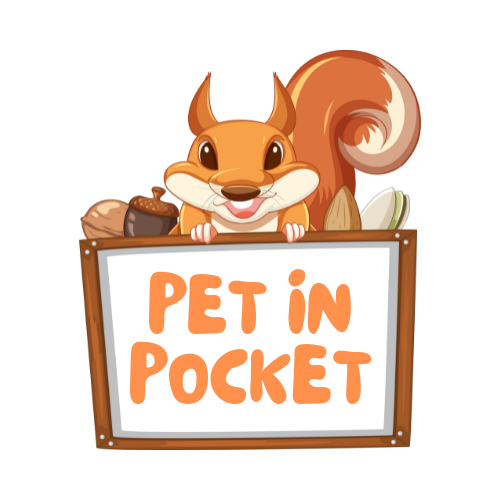

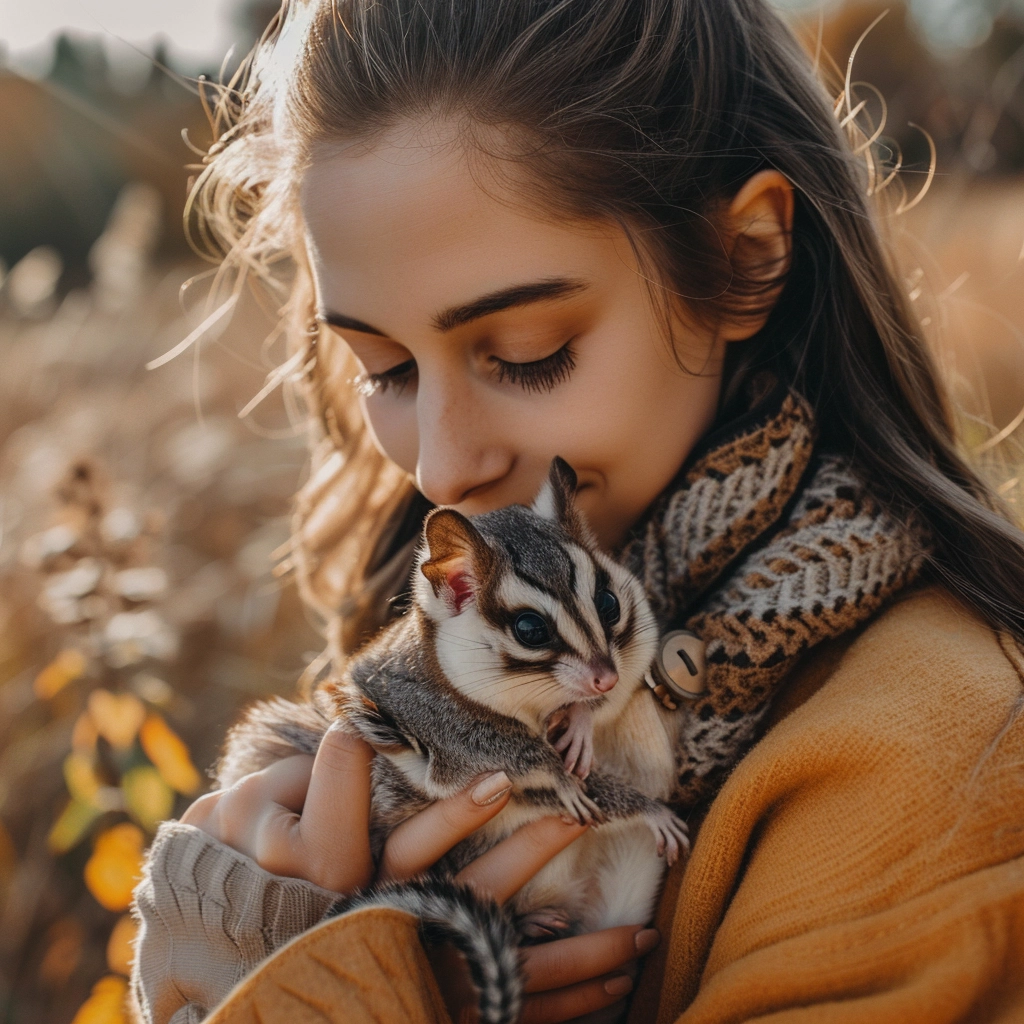
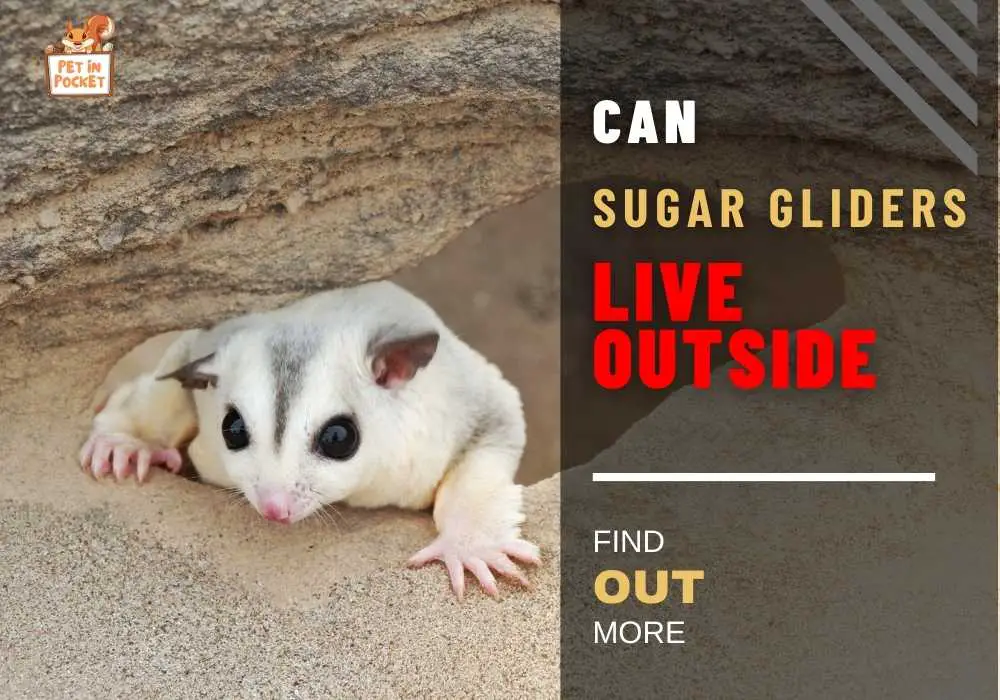

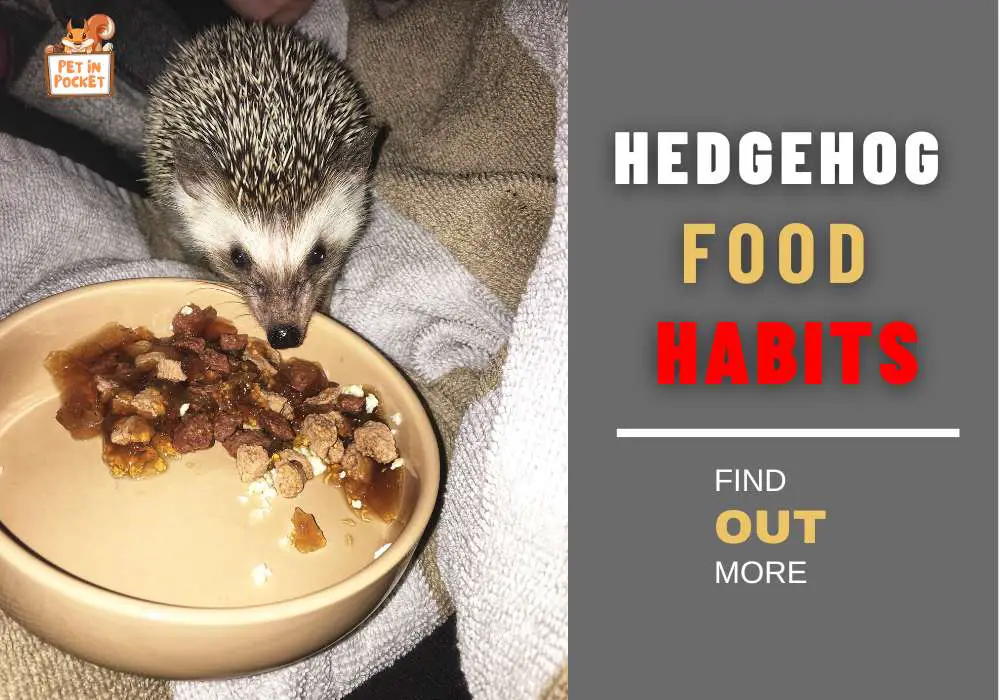
Leave a Reply